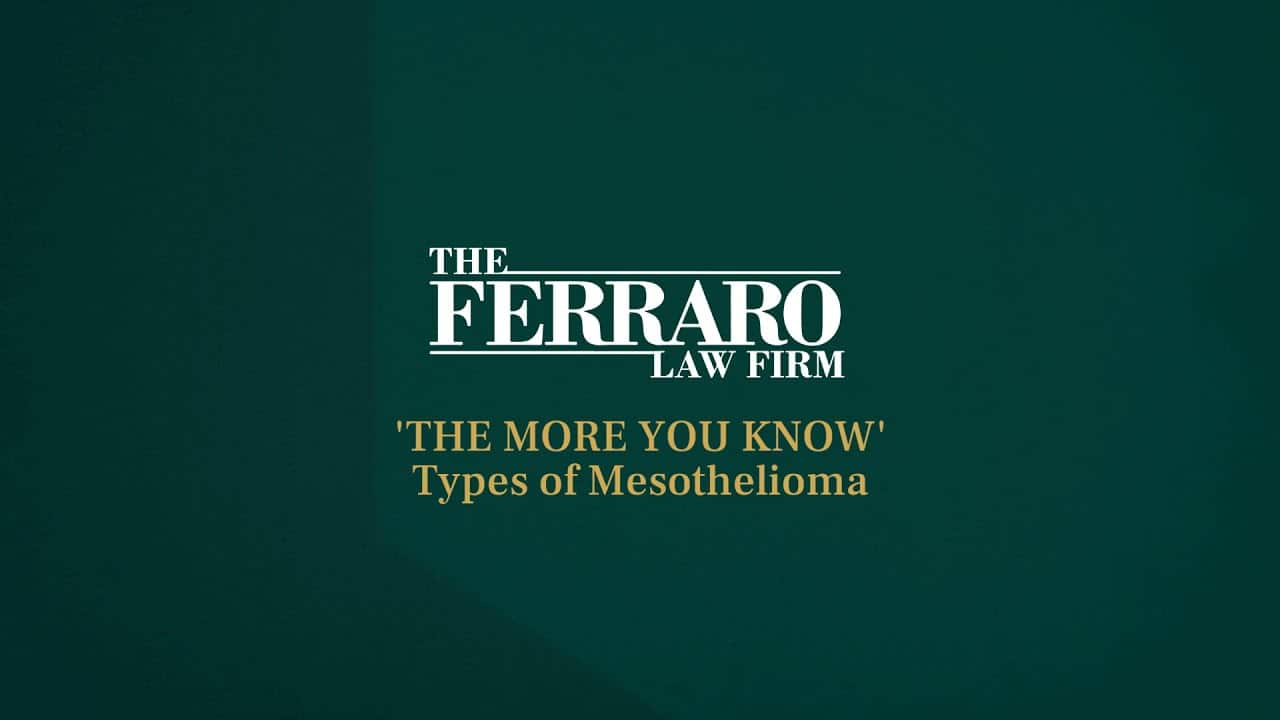If you were seriously injured, remember that it is crucial to choose the right law firm to represent your interests. We have been doing this for more than three decades, and have the resources you need to challenge any opponent.
Why Negligence with Asbestos Can Mean Criminal Charges
When you’ve been injured as a result of asbestos exposure, particularly by contracting mesothelioma or other related diseases, you may be able to pursue civil litigation to hold companies and real estate developers accountable. At The Ferraro Law Firm, our Florida mesothelioma lawyers have handled hundreds of cases like these over the years, and in the process we’ve secured billions in settlements and verdicts for our injured clients.
However, on some occasions, the government may decide to pursue criminal charges for asbestos exposure through the criminal justice system. Although these proceedings are separate from civil actions, it shows the tremendous gravity of negligence when it comes to asbestos. One Florida real estate developer was recently sentenced on a misdemeanor count for exposing his workers to asbestos during the removal process, thus endangering both their lives and their livelihoods. In this post, we’ll discuss the case and how you can identify negligent asbestos removal.
Table of Contents
Why Are There Criminal Charges for Negligence with Asbestos?
Prior to the 1970’s, asbestos was one of the most commonly used insulators and flame retardants in building construction. Used in everything from floor tiles to wall insulation, asbestos had no regulations and no limitations, in spite of a growing body of research that indicated it could cause cancer. This highly toxic mineral is the only known cause of pleural mesothelioma, a deadly kind of cancer that can take up to 40 years to present symptoms. It can also cause a painful disease called asbestosis, and many other health problems.
Fortunately, in 1976 the federal government passed the Toxic Substances Control Act, which was one of the first pieces of legislation to address the issue of asbestos head-on. It allowed the EPA to analyze the effects of asbestos on individuals, and it restricted its use in construction and other industries with high levels of asbestos exposure. Although it’s still not completely banned in the United States, there have since been other additional regulations that can allow consumers and employees to hold businesses accountable for asbestos exposure.
Florida Real Estate Developer Sentenced for Negligent Removal
In August, a Florida real estate developer by the name of Philip J. Farley III was sentenced after putting his workers in “imminent danger” while they removed asbestos from his properties. This notoriously difficult process is well-known in the construction industry to require expertise and training to perform safely, and yet Farley ignored the demands for careful removal, and knowingly exposed workers to the danger anyway. This led to his conviction under the EPA’s Clean Air Act.
He was also previously convicted of hiring cheap labor to remove 120,000 square feet of “popcorn ceiling” containing asbestos. Farley will be paying $250,000 to fund a treatment program for the affected workers, and will be under probation for the next 48 months.
Know the Signs of Improper Asbestos Removal
If you’ve ever worked on a construction project, or simply helped to renovate a home, you may have unknowingly been exposed to asbestos, or asked to remove asbestos without the proper precautions or documentation. Regardless of the situation, the property owner or employer may be financially liable for any injuries you sustain in the wake of this negligence – and as with the case of Mr. Farley, they may face criminal charges, too.
Here are some of the signs that asbestos is in a home:
- There is paste or asbestos debris left on heating pipes. One sure sign that asbestos has been removed improperly is evidence that pipes were not cleaned fully. Any scraps of fibrous material that you see on irrigation systems may still expose unwary residents or workers to asbestos.
- There is no on-site supervisor while you are removing toxic materials. In an attempt to protect themselves from asbestos exposure, many supervisors may leave the scene while you are asked to remove materials from the premises. This may be a sign that you are being exposed to this dangerous substance.
- None of the workers are asked to wear protective gear. If you’re working to remove asbestos yourself, you must be fitted with the proper masks and hazard suits. Failing to have these could make an employer or company liable for its workers’ injuries.
- No hazardous warning signs are present on the site. If you’ve been asked to remove a popcorn ceiling or to remove certain kinds of insulation, the company is legally obligated to provide certain documentation and display prominent hazard signs.
- You have not been asked to place debris in airtight containers. During the process of asbestos removal, it’s imperative that workers place it in airtight containers and take it to the appropriate sites. Otherwise, the contaminant could spread through the ground and water systems at its ultimate destination, and endanger thousands of civilian lives, too.
Frequently Asked Questions: Mesothelioma & Asbestos
Does asbestos exposure cause an instant effect?
How long does asbestos stay in air?
If you’ve been affected by improper asbestos removal, contact our Florida lawyers at The Ferraro Law Firm. Call us at (888) 554-2030 for a free consultation today.






